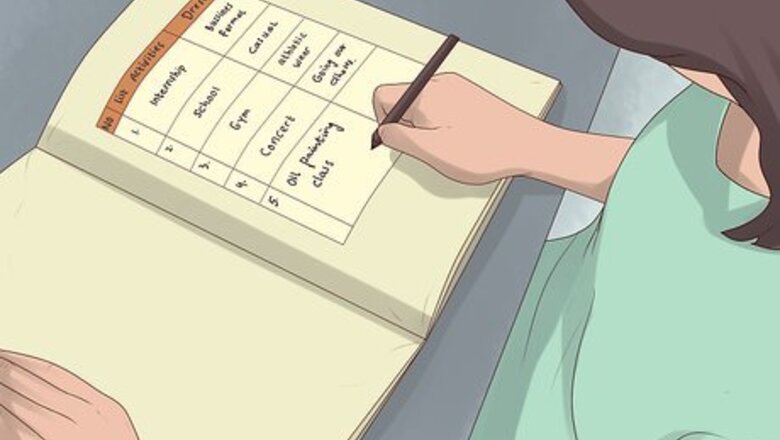
views
Streamlining Your Wardrobe
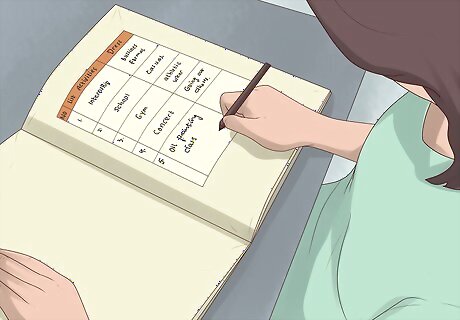
List all the activities you regularly dress for to narrow your wardrobe’s focus. Consider a typical week or season in your life and write out a list of all the environments and activities you get dressed for on a regular basis. Jot down the type of clothing you need for each environment. When assessing your wardrobe, keep these activities and clothing categories in mind. Figure out what you actually wear with your hangers. Turn all your hangers hanging backwards in your closet. Over the course of two or three weeks, as you take out clothes, turn the hanger the right way. At the end of this period, this will help you see what you do use, and what you do not -- the disused items will hang on the backwards hangers. Your list could look something like this: “internship (business formal), school (casual), gym (athletic wear), concerts (going out clothes), oil painting class (old, messy clothes)” This strategy will help you avoid keeping or adding pieces to your closet “just in case.” For example, if you seldom go to the beach, you likely do not need a dozen bikinis. If you have an active lifestyle and dress pretty casually at school, focus on filling your wardrobe with athletic apparel and comfortable basics like jeans and knit tops. Do not bother splurging on dress shoes that you’ll rarely wear. Some items may not be worn often but are acceptable to keep. Examples include: Interview clothes Clothes appropriate for a formal occasion: wedding, funeral, christening, semi-formal dance, awards ceremony, graduation. Christmas sweater, if you really like it and do wear it every year. Ceremonial clothing, such as academic robes for a college professor.

Keep the clothes that fit well and work with your lifestyle. Start by pulling everything out of your closet, drawers, and shelves. Look at each piece 1 by 1 and decide whether or not it can stay. Create a “keep” pile for garments that fit well, that are appropriate for the activities and environments you listed out, and that you enjoy wearing. Then reorganize your closet by neatly hanging or folding the clothes from your “keep” pile and placing them in an easy-to-reach spot. This strategy is called “shopping your wardrobe.” Rediscover clothes you actually love but do not wear often enough. Try this to bring a fresh burst of novelty into your wardrobe without spending a penny. If you have not worn a piece in the last year, consider this strongly as a piece to pass on. Either commit to wearing the piece, or let it go. If a piece does not fit correctly--whether too large, too small, or is uncomfortable--generally it is time to let it go. If a piece is severely stained, ripped (with maybe the exception of artfully torn jeans or purposefully bleached items), or otherwise not presentable it is also time to let it go. Sentimental pieces that hold memories but are not actively worn usually should be let go. While you might treasure the handknit sweater your grandmother made for you, maybe just keep your favorite. You do not necessarily have to toss all your clothing treasures, as there are some ways to keep them without cluttering up your closet, such as: Make a shadowbox of your Scout uniform. Make a T-shirt quilt of all of the free T-shirts accumulated during your high school sports career. Turn your favorite concert sweatshirt into a pillowcase or throw pillow. Upcycle your beloved but worn jeans into your new favorite bag or other crafts. Make a “toss” pile for the pieces that need to be discarded. Sell to a or donate these clothes to get them out of your wardrobe.

Considering tailoring your clothes so they fit perfectly. If you have a blazer and a structured dress that are a little roomy around the middle, have a tailor nip in the waistline to give your clothes a leaner silhouette. If you have shirt sleeves, dresses, skirts, or trousers that are too long, get them hemmed to the right length. Have your bottoms taken in at the waist so they fit comfortably and flatter your figure. Tailoring will not work for all pieces. While a good tailor or seamstress can often do amazing things, not every item can be tailored. The cut, the type of fabric, and the condition of the fabric all play a role. Tailoring can get expensive. While it may make sense to tailor a high quality blazer, it may not for a pair of shorts. It is easier to make smaller than make larger. It is easy to shorten a cuff. A size 10 pair of pants is unlikely to be able to be able to fit a size 16 woman. Keep in mind that certain areas, such as the shoulder area, are hard to alter. Don’t buy or keep pieces that don’t fit well in the shoulders since you probably won’t be able to have them altered. Breathe new life into an older piece from your closet with simple alterations. Hem a dress into a blouse, give trousers more personality with a cropped cut, or swap out boring plastic buttons for higher quality ones.

Get rid of undergarments that don’t fit you well. Dressing well starts with the right undergarments. Toss out bras that are too small or too big, since they will create lumps and bumps under your clothes. Do the same for panties or briefs. For men, toss out worn-out or mismatched socks, which can make a sleek pair of shoes look drab. When wearing suiting, aim to match your sock color to your trouser color. If you have a skirt that looks see-through, your outfit will instantly look cheap. Pop on a simple slip underneath to smooth out the fabric and give you a little more modesty. Measure your bra size. Only keep or purchase bras in the right size and in styles that you like. Consider wearing well-fitting shapewear under special occasion dresses.
Investing in the Right Pieces

Shop for clothes that flatter your body shape. Take your body measurements and use them to help determine your body shape. Once you know it, search online for dressing guides based on your body shape. Take note of the cuts, silhouettes, and proportions that stylists recommend. Try on a variety of outfits based on the “dos” and “don’ts” for your body shape to see how things look on you. Then limit your wardrobe selections and styling choices to the most flattering outfits. A few body shapes include triangular, pear-shaped, apple, hourglass, and more. Try to find the term that best describes your figure. Keep a list of your measurements on your smartphone so you have them available while shopping. This way, you can get perfectly-fitting clothes whenever it’s time to make a purchase. Don’t try to dress for your “ideal” body by buying clothes in a size too small. Dress for the body you’re walking around in right now. You’ll look so much more stylish and you’ll feel a lot more comfortable!
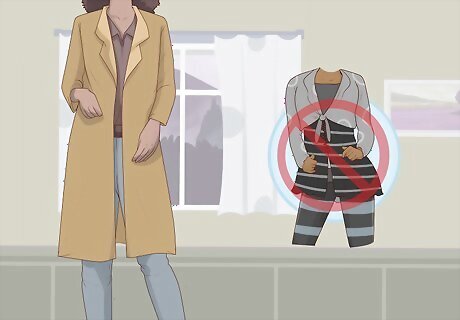
Choose classic styles and silhouettes rather than fleeting trends. While the latest trends can be fun to experiment with, trendy pieces will go out of fashion quickly. Don’t waste your money on short-lived styles. Instead, pick out pieces that have been in style for years and that will likely stick around despite the changing trends. Classic styles include a timeless camel trench coat, a pair of dark-wash jeans in a flattering cut, and a simple black dress. Chic outerwear, like a jacket or blazer, can really elevate a basic outfit. Avoid clothes that have some extreme quality, such as styles that are too short, too long, or too baggy. Steer clear of pieces with too many frills, confusing asymmetry, or unnecessary embellishments. EXPERT TIP Alena Le Blanc Alena Le Blanc Personal Stylist Alena Le Blanc is the Personal Stylist and the Founder of Le Blanc Label. Based in San Francisco, California, Le Blanc Label is the leading personal stylist brand for sustainable style transformations. Alena and her team specialize in seasonal wardrobe refreshes, closet edits, styling for special events, travel, photoshoots, and general personal needs. Alena has been featured in podcasts including EMPOWERED BY WMN, I Am Fearless, and Mind Power Meets Mystic. Alena received her BFA in Fashion and Apparel Design from the Academy of Art University. Alena Le Blanc Alena Le Blanc Personal Stylist "Quiet Luxury" is a fashion trend that values quality and craftsmanship over flashy designs. The trend emphasizes minimalism and timeless pieces of the highest quality. Examples of quiet luxury include a well-made cashmere sweater, a perfectly tailored blazer, or a simple white cotton shirt.

Select garments that coordinate. Consider garments that coordinate together with versatility, rather than separates that have limited use and get outdated quickly. In general, a solid piece will stay in fashion longer than its patterned or printed counterpart. Consider fashion neutrals like black, navy, khaki, blue denim, and white. These colors will typically go with any other color mixed into your wardrobe. .Dress Well on a Budget Step 7 Version 2.jpg Your wardrobe can certainly be based on other colors--the key is to have your clothes all go together. While neutrals are a sophisticated, versatile palette it is not the only one. For instance: Tropical: corals, yellows, blues, greens, and whites. Black: a monochrome wardrobe with interest often turned towards patterns, embellishments, or minimalism. To add interest to solids, look for unique textures rather than prints and patterns. If you wear lots of navy blue, find navy blue pieces in cable-knit wool, cotton, faux fur, or satin. A neutral and restricted color palette will be much easier to mix and match, and won’t be clashing. Avoid buying prints. In fast fashion, prints tend to be lower quality, and you’ll start to see the prints fading and the fabric pilling after a few washes.
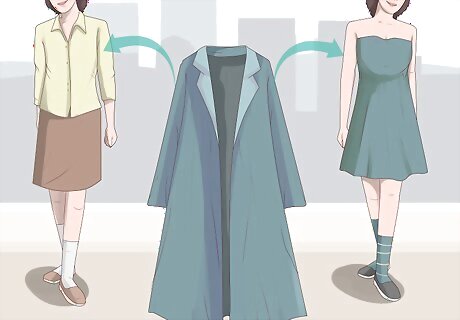
Purchase pieces that you can mix-and-match or layer with your other clothes. Develop a small but highly functional capsule wardrobe. Whenever you’re out shopping for new additions to your wardrobe, pick clothes that work well with the pieces you already have. Look for basic cardigans and blazers that can be layered over simple blouses and t-shirts. Choose dress shirts that would pair well with the trousers and jeans you already own. Pick out practical shoes in classic styles that can be worn with a variety of outfits. If you’re considering buying a piece but you know that you’d only be able to wear it with 1 or 2 things, don’t bother. If you have 20 great tops, 10 pairs of trousers, 5 skirts, and 2 pairs of shorts, you can technically make 340 outfits!
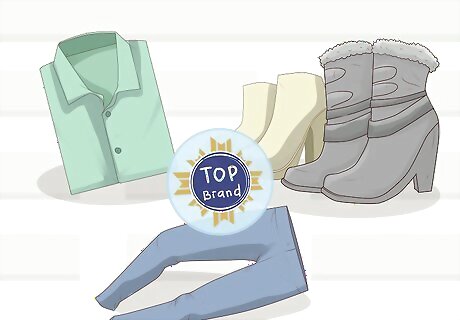
Spend your money on high-quality wardrobe basics. If you’re going to splurge, splurge on the essential pieces that you wear all the time and that you’ll be wearing for years to come. Upgrade your faded white undershirts, saggy boxer-briefs, and holey socks. Aim for well-fitting, higher quality pieces that wash well. Purchase 1 or 2 neutral bras in the right cut. Extend this strategy to other essentials like shoes, outerwear, and other classic pieces.
Shopping Frugally
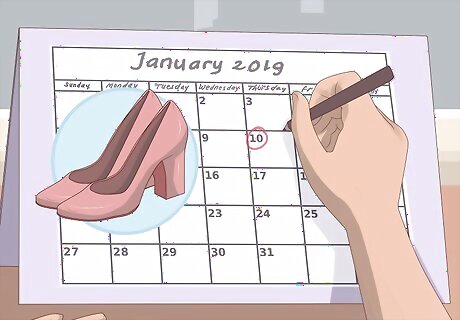
Wait to buy trendy items once they go on sale. If you have a solid, classic capsule wardrobe, you can still shake up your look with inexpensive accessories. Try a pair of funky earrings, a printed scarf, a unique hat, or a cool pair of patterned socks. Don’t jump as soon as you see a trend hit the shelves; wait until the end of the season so you can buy it on sale. Another good reason to wait is that after a few months, you’ll know whether you really want to purchase the trendy piece or whether it was just a fad. Shop at the end of the season to buy pieces for the following year. Wait to get your summer shorts until the temperatures start to drop and retailers slash their prices. While you won’t get much use out of them immediately, you’ll have a great new pair of shorts to enjoy next summer.

Apply coupons and discounts to your purchases. Avoid paying full-price for anything if you can help it. Instead of browsing new arrivals when you enter a bricks-and-mortar shop, head straight to the clearance rack, especially when there’s a deeper discount on clearance pieces. When you’re shopping online, don’t get your heart set on anything until you have a chance to add it to the cart and enter your promo codes. If the codes don’t apply, consider waiting until you can get a better price. Subscribe to a retailer’s emails online to snag a coupon, then unsubscribe once you’ve used the offer so you aren’t tempted to spend more money. Some clothing retailers offer student discounts. Browse online to see which brands participate in this kind of program.
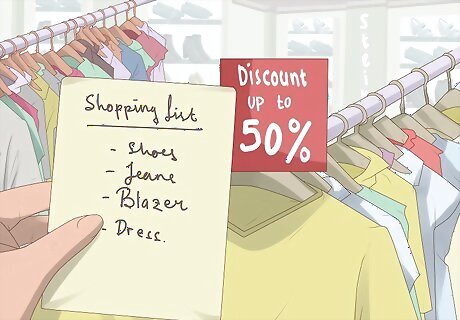
Buy quality clothes at off-price retailers. Off-price retailers are known for their wide variety of styles, mix of high-end and lesser-known brands, and affordable prices. Browse off-price retail stores rather than heading to pricier boutiques and department stores. Bring a specific shopping list when you visit and restrict your search to the pieces on your list. Try things on until you find the right cut and style. Don’t let the low prices persuade you into making impulse buys. Popular off-price retailers in the US include TJ Maxx, Marshall’s, Ross, Burlington Coat Factory, DSW, Stein Mart Off-price retailers associated with department stores include Nordstrom Rack, Saks Off 5th, and Neiman Marcus Last Call. Try factory stores and outlet malls as well.

Try shopping at thrift stores and second-hand retailers. Look for gently-worn pieces from quality brands at your local thrift shop. If you see a piece in good condition or that still has its tags, and it works for your budget and with the rest of your wardrobe, consider adding it to your wardrobe. Before making a purchase, inspect each garment’s underarms for stains and holes, make sure closures like buttons and zippers are working correctly, and check out the areas that tend to get worn out quickly like knees, elbows, and crotch area. In the US, try shops like Plato’s Closet and Buffalo Exchange as well as charity shops including Goodwill and the Salvation Army.




















Comments
0 comment